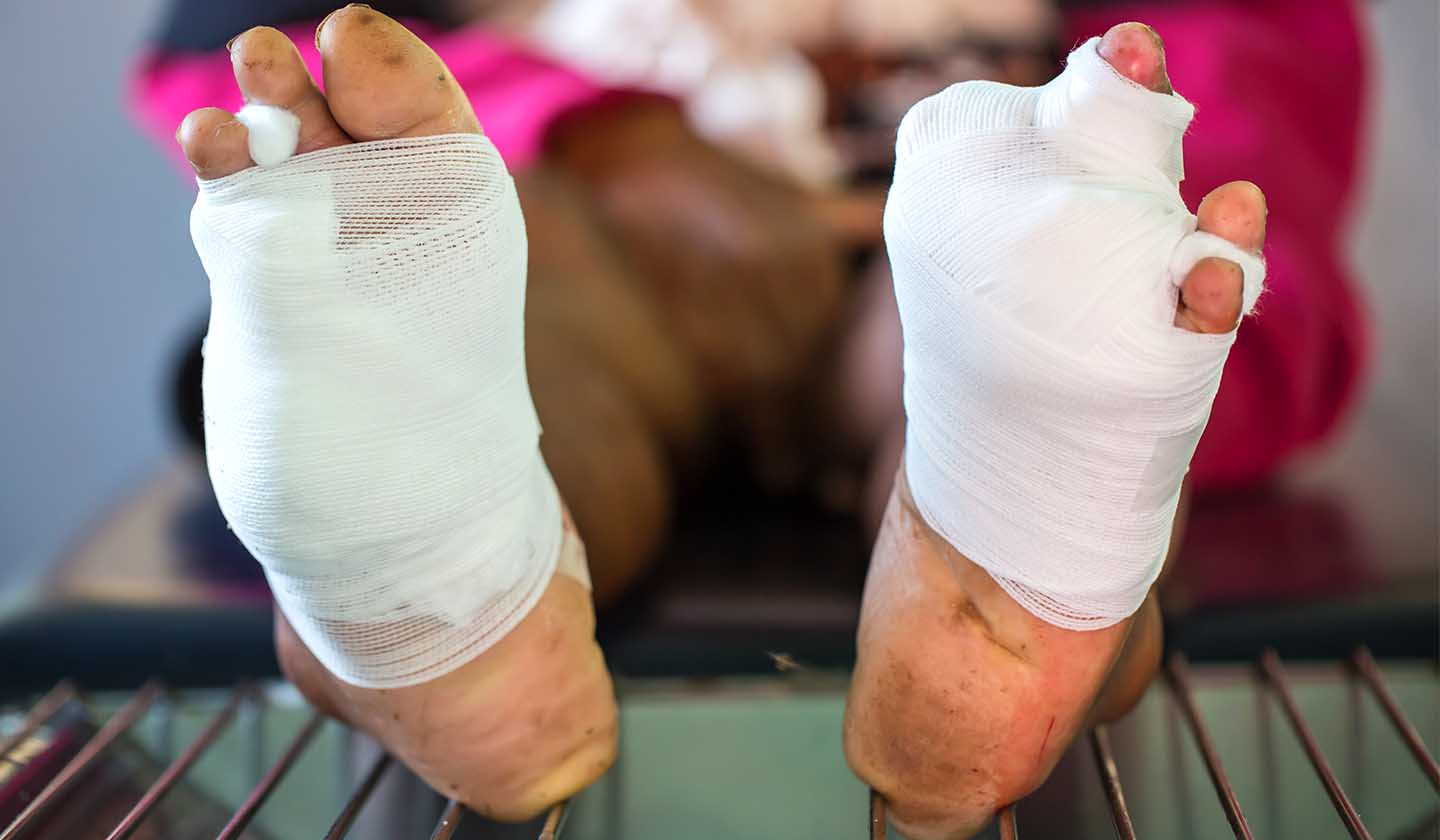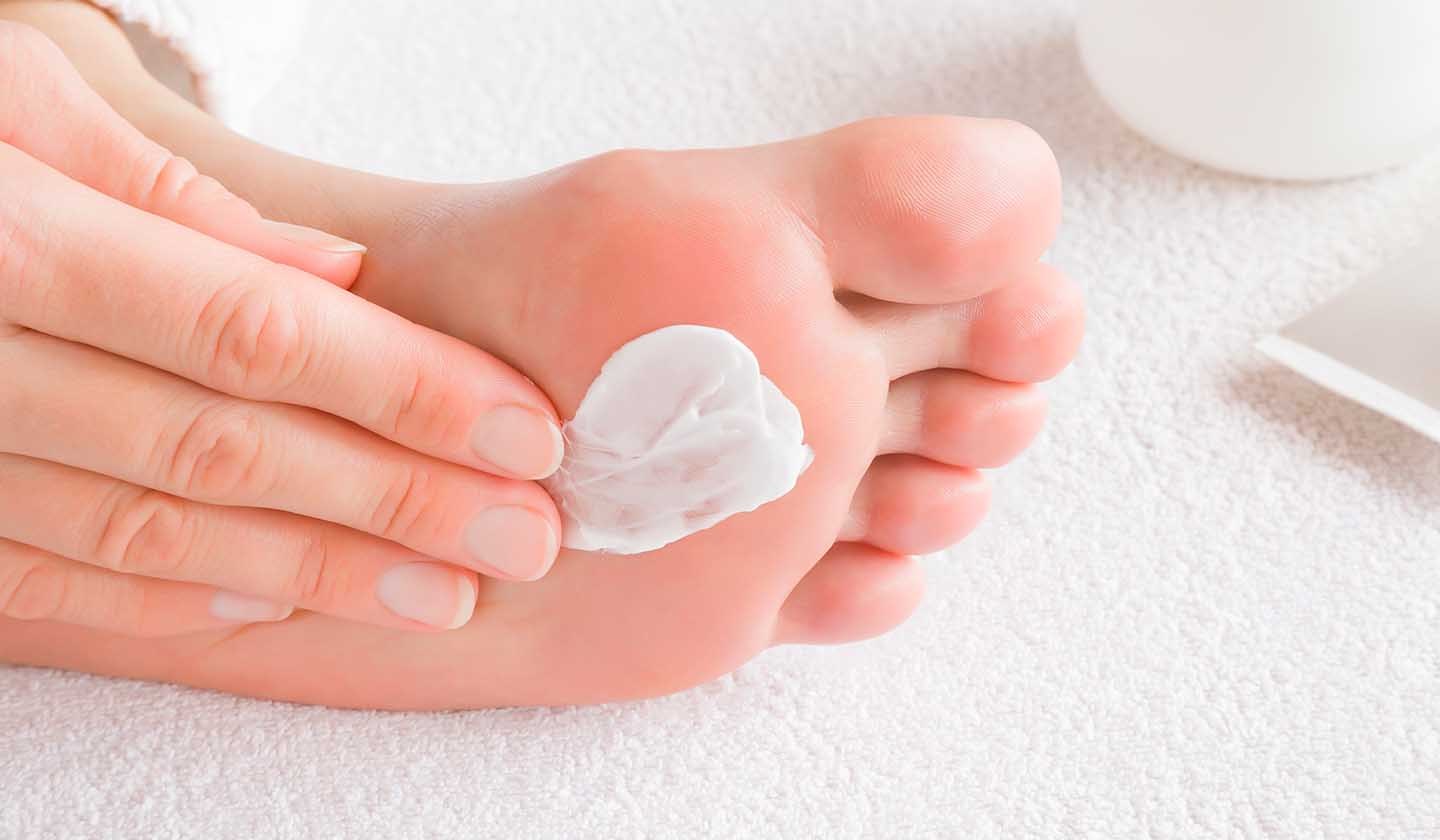Endocrine system
Watch out for one of the most serious complications of diabetes

Data from 2015 estimate that diabetes affects about 13.3% of the population between 20 - 79 years of age, in Portugal, that is, more than 1 million Portuguese, of which 44% do not even have a diagnosis of the disease.
As diabetes progresses, patients can develop several complications in different organs; such complications often evolve in a silent way, sometimes being detected only when the stage of the disease is already too advanced.
Did you know that the Diabetic Foot is one of the most serious complications of diabetes and is responsible for more than half of all amputations performed by causes that do not result from trauma? It is also known that about 25% of patients suffering from diabetes are at increased risk of developing the Diabetic Foot disease.
If you have diabetes, you should know that controlling the disease and daily foot care are essential to avoid this complication that can have disastrous consequences. Prevention is better than cure…

How does Diabetic Foot start?
Diabetes is characterised by a persistent hyperglycaemia (high blood sugar levels) which over time leads to metabolic changes that can damage several organs and especially the feet.
Poorly controlled diabetes increases the risk of:
- Injury to peripheral nerves - neuropathy - leading from loss of sensitivity in the feet to pain, heat, cold, and tingling;
- Damage to blood vessels - peripheral vascular disease - causing poor blood circulation in the feet and hands, which makes it difficult to heal wounds and increases the risk of infections.

Are there any risk factors for developing the Diabetic Foot disease?
Yes, there are some factors that significantly increase the risk of developing this condition.
- poor blood glucose control
- physical inactivity
- smoking
- unbalanced diet
- obesity
- high blood pressure
- foot problems (bunions, heel spurs)
- lack of specific foot care

Signs and symptoms
Pay attention to your feet. If you experience any of these symptoms talk to your pharmacist or doctor.
- Burning feeling, tingling or pain;
- Decrease or loss of sensitivity to heat, cold or touch;
- Change in skin colour;
- Appearance of blisters, wounds, ulcers, calluses with dried blood, cracks in the heel;
- Thickening and colour changes in nails, ingrown nails;
- Swollen feet;
- Leg pain.

What care to take?
- Keep your blood glucose levels in control;
- Undertake an adequate physical activity on a daily basis (walking is a good option);
- Inspect your feet daily (to make sure you have no wounds and do not forget to check your soles and nails as well);
- Wear comfortable shoes, adjusted to your feet, as well as seamless and elastic-free cotton socks;
- Check the inside of your shoes before putting them on (due to poor sensitivity to touch, you may not be aware of any object inside the shoe and the presence of small pebbles may be enough to cause a foot injury);
- Do not use salicylates (card files are preferred to wear away calluses, make an appointment with a podiatrist to treat foot problems);
- Do not walk barefoot (a foot wound in a patient with diabetes is always at increased risk of infection);
- Do not use hot water bags to warm your feet - due to lower sensitivity to heat, you might not be aware of the high temperature of the water, which can cause severe burns;
- Don't miss your medical appointments. Your feet should be checked at least once a year by your nurse or physician (or even more often if you already have any complications).

How to practice good foot hygiene?
Daily foot hygiene is essential to prevent the diabetic foot disease. The following precautions should be observed:
- Wash your feet with warm water and use pH 5.5 or neutral hygiene products;
- Dry your feet very well with a soft towel and do not forget the area between the toes;
- Using apple cider vinegar on your nails and skin is a good practice as it prevents the proliferation of fungi and bacteria;
- Apply a moisturising foot cream daily. There are many products available on the market suitable for treating the diabetic foot disease. Talk to your pharmacist;
If you have perspiration problems, use an antiperspirant for your feet and shoes;
File your nails straight across so that they grow into the skin. Use emery board files rather than nail clippers or scissors;
Taking care of your feet is taking care of your health;
Do not forget that the best way to prevent diabetes complications is to keep your blood sugar in control.
Sources
iSaúde
Farmácia Distribuição Magazine
Também lhe poderá interessar
Fungus
Athlete's foot - Run with the problem
Drugs and devices






